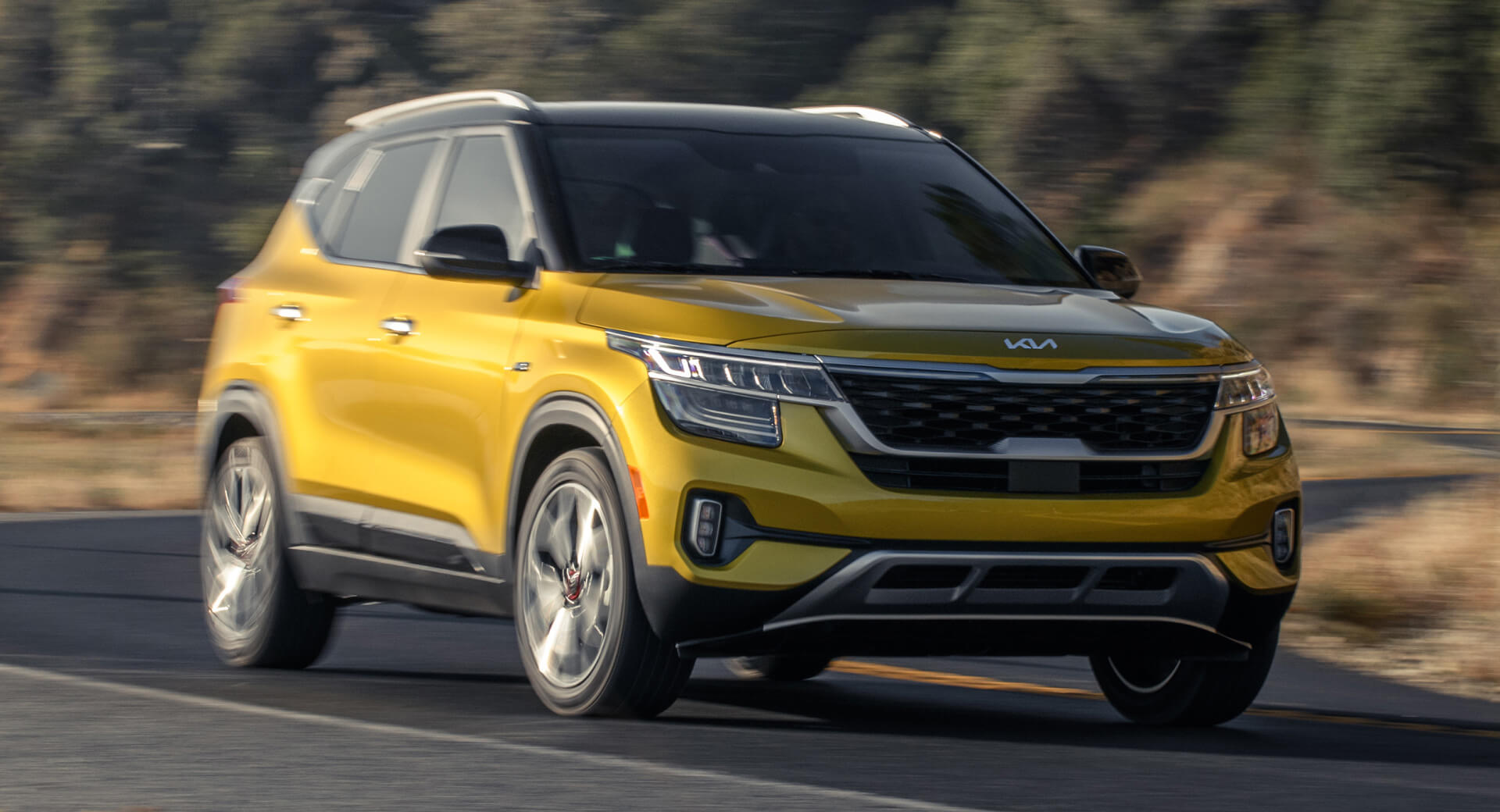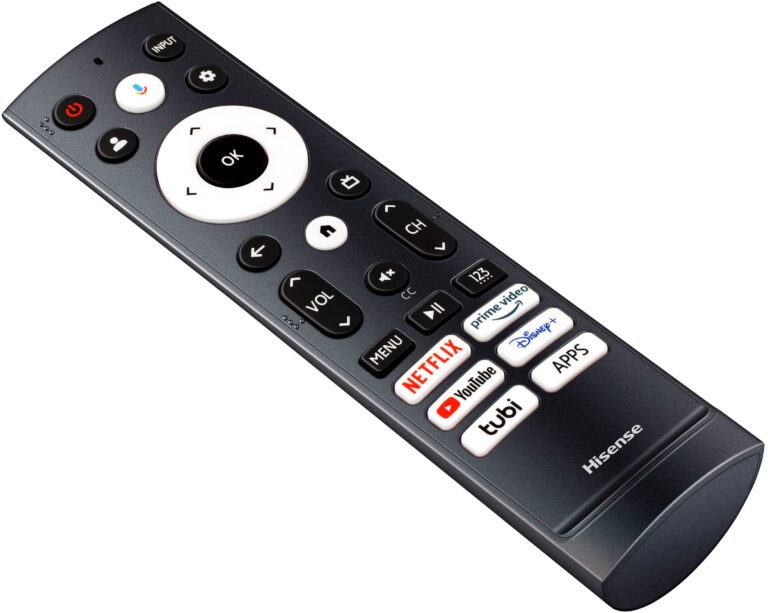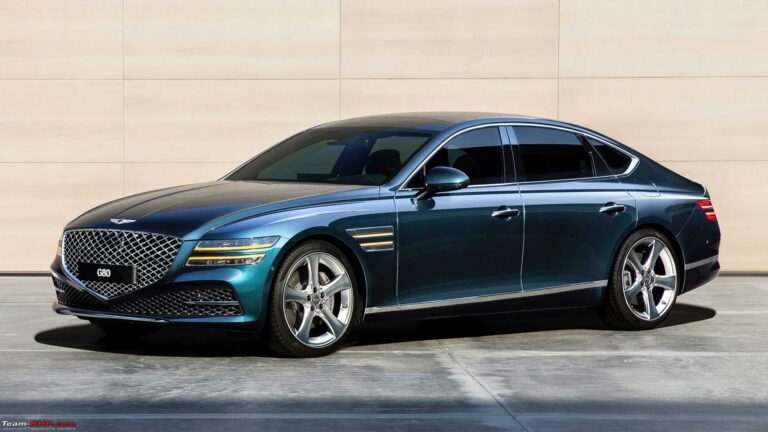Cheapest Brand New Car In America: Your Guide to Affordable Wheels
Cheapest Brand New Car In America: Your Guide to Affordable Wheels cars.truckstrend.com
In an era of escalating car prices, the quest for the "Cheapest Brand New Car In America" has become more pertinent than ever. For many, a new vehicle isn’t just a luxury; it’s a necessity for commuting, family transport, or simply navigating daily life. However, with the average new car transaction price soaring, finding an entry-level, reliable, and truly affordable option can feel like searching for a needle in a haystack. This comprehensive guide aims to illuminate the landscape of budget-friendly new cars, helping you understand what "cheapest" truly means, identify the top contenders, and make an informed decision that aligns with your needs and budget.
The importance of the cheapest brand new car extends beyond just the sticker price. It represents accessibility to reliable transportation for first-time buyers, students, those on a fixed income, or anyone looking to minimize their automotive expenses without compromising on the peace of mind that comes with a new car warranty and the latest safety features. While these vehicles may lack the bells and whistles of their more expensive counterparts, they often deliver on the fundamental promise of getting you from point A to point B safely and efficiently, all while keeping a significant chunk of change in your pocket.
Cheapest Brand New Car In America: Your Guide to Affordable Wheels
The Landscape of Affordability – What Defines "Cheapest"?
When we talk about the "cheapest brand new car," we’re primarily referring to vehicles with the lowest Manufacturer’s Suggested Retail Price (MSRP) for their base trim level. This typically means models equipped with a manual transmission (if available), no optional packages, and the most basic set of features. These cars are designed to meet a specific market demand: buyers who prioritize affordability above all else.
Historically, the American market offered a wider array of truly bare-bones options. However, due to several factors—including inflation, stricter safety regulations, consumer demand for more technology, and the rising cost of materials and labor—the number of vehicles available under $20,000 has dwindled significantly. Many manufacturers have shifted their focus to more profitable, feature-rich models or larger vehicles like SUVs. Yet, a few steadfast contenders remain, offering a lifeline to budget-conscious consumers. These cars exist because there’s still a strong demand for entry-level vehicles, whether for individual buyers, fleet purchases, or as an affordable secondary vehicle.
Contenders for the Crown: Top Cheapest Brand New Cars in America (Current Market)
Identifying the absolute cheapest car can be a moving target, as manufacturers adjust pricing and models are updated or discontinued. However, based on current market trends and consistent offerings, a few models consistently vie for the title. It’s crucial to remember that base MSRPs are just starting points and can vary based on region, dealer incentives, and any optional accessories.
-
Mitsubishi Mirage (Hatchback) & Mirage G4 (Sedan): Often the undisputed champion of low MSRP, the Mirage is a subcompact known for its exceptional fuel economy and an industry-leading 10-year/100,000-mile powertrain warranty. While its 1.2-liter three-cylinder engine provides modest power, it’s perfectly adequate for city driving and light highway use. The G4 sedan offers a traditional trunk, while the hatchback provides more versatile cargo space.

- Pros: Lowest MSRP, excellent warranty, fantastic fuel economy, very maneuverable.
- Cons: Underpowered, basic interior, noticeable road noise.
-
Nissan Versa: A strong contender for value, the Versa is a subcompact sedan that often surprises buyers with its relatively spacious interior and comfortable ride for its class. It offers a more refined driving experience than some of its ultra-budget competitors and comes standard with a decent suite of safety features even on its base trim.
- Pros: Roomy interior, comfortable ride, good fuel economy, standard safety tech.
- Cons: CVT can be noisy under acceleration, not particularly engaging to drive.

-
Kia Forte: Stepping up slightly in price, the Kia Forte compact sedan offers a compelling package of style, features, and value. Its base model often includes more standard equipment than the subcompacts, such as an 8-inch touchscreen infotainment system with Apple CarPlay and Android Auto. It provides a more substantial feel and better performance than the cheapest options.
- Pros: Stylish design, good standard features, comfortable interior, competitive warranty.
- Cons: Base engine can feel sluggish, higher starting price than Mirage/Versa.
-
Hyundai Elantra: Sibling to the Kia Forte, the Hyundai Elantra is another strong contender in the compact sedan segment, known for its distinctive styling and well-equipped interior even at its entry level. It shares many mechanical components with the Forte and offers similar value, often with slight variations in styling and trim packaging.
- Pros: Bold styling, intuitive infotainment, comfortable ride, good fuel economy.
- Cons: Base engine performance is modest, some interior materials feel budget-friendly.
-
Hyundai Venue: For those seeking a compact crossover form factor at a budget price, the Hyundai Venue often fits the bill. While technically an SUV, its compact footprint and urban-focused design make it an excellent choice for city dwellers. It offers a higher driving position and practical cargo space without a significant jump in price.
- Pros: Compact SUV styling, good visibility, practical for city driving, surprisingly good standard features.
- Cons: Smallest SUV, limited highway power, no AWD option.

Beyond the Sticker Price: True Cost of Ownership
While the MSRP is your initial hurdle, the true cost of owning a vehicle extends far beyond that first payment. When considering the cheapest brand new car, it’s vital to evaluate the total cost of ownership over time.
- Fuel Economy: Lower-priced cars often come with smaller, more efficient engines. The Mitsubishi Mirage, for example, consistently ranks among the most fuel-efficient non-hybrid gasoline cars. Significant long-term savings can accumulate, offsetting some of the initial purchase cost.
- Insurance Costs: Generally, cheaper, less powerful, and less flashy cars tend to have lower insurance premiums. They are less expensive to repair or replace, and often driven by demographics considered lower risk.
- Maintenance & Repairs: Simpler mechanics and fewer complex electronic systems can translate to lower maintenance costs. Furthermore, a new car warranty provides peace of mind against unexpected major repair bills for several years. Manufacturers like Mitsubishi, Kia, and Hyundai offer excellent long warranties that significantly reduce out-of-pocket expenses for covered issues.
- Depreciation: While all new cars depreciate, the percentage of value lost can vary. Ultra-affordable cars sometimes hold their value better in percentage terms because there’s less "room" for the price to drop significantly. However, in absolute dollar terms, a $17,000 car losing 30% of its value ($5,100) is different from a $30,000 car losing 30% ($9,000).
- Financing: Even with a low MSRP, financing costs can add up. Shop around for the best interest rates from banks, credit unions, and the dealership’s finance department. A slightly higher interest rate can negate some of the savings from a lower purchase price.
Important Considerations When Buying a Budget Car
Purchasing the cheapest brand new car requires a thoughtful approach. Here are key factors to weigh:
- Needs vs. Wants: Clearly define your non-negotiable requirements. Do you need specific safety features, cargo space, or fuel efficiency? Are leather seats or a premium sound system "wants" that can be sacrificed for savings?
- Safety Features: While base models meet federal safety standards (airbags, ABS, stability control), advanced driver-assistance systems (ADAS) like automatic emergency braking, lane-keeping assist, and adaptive cruise control may only be available on higher trims or as optional packages. Prioritize safety within your budget.
- Reliability and Warranty: This is where new cars shine over used. A comprehensive warranty provides peace of mind against unexpected repairs. Brands like Mitsubishi, Kia, and Hyundai are known for their generous warranty programs.
- Resale Value: While you’re buying new, eventually you might sell or trade in. Research typical depreciation rates for the models you’re considering.
- Driving Experience: Expect basic performance. These cars are built for efficiency and affordability, not thrilling acceleration or razor-sharp handling. Test drive thoroughly to ensure you’re comfortable with the power and ride quality.
- Availability: Lower trim levels might not be as readily available on dealer lots as higher-spec models. You might need to order, wait, or expand your search radius.
Tips for Securing the Best Deal
Even when buying the cheapest car, there’s still room to save:
- Research Thoroughly: Compare models, specific trim levels, and dealer inventories. Understand what standard features come with the base model and what would be an extra cost.
- Be Flexible: If you’re not fixated on a specific color or a minor optional feature, you might find a better deal on a car that’s already on the lot.
- Negotiate: The MSRP is a suggested price, not a fixed one. Be prepared to negotiate the final sale price, especially at the end of the month or quarter when dealerships are trying to meet sales targets.
- Timing is Key: New model year releases (often late summer/early fall) can mean discounts on the outgoing year’s models. Holidays and sales events can also offer opportunities.
- Shop for Financing Separately: Don’t rely solely on the dealership for your loan. Get pre-approved by your bank or credit union to compare rates and ensure you’re getting the best deal.
- Evaluate Trade-in Separately: If you have a trade-in, negotiate the new car price first, then discuss your trade-in value.
Potential Challenges and Solutions
- Limited Features: Many budget cars come with manual crank windows or lack touchscreens on the base model.
- Solution: Prioritize essential features. Aftermarket solutions can provide basic tech like a new head unit with Apple CarPlay/Android Auto if not standard.
- Basic Performance: Expect a modest engine and potentially more road noise.
- Solution: Manage expectations. These cars are designed for economical transport, not spirited driving. Test drive to ensure it meets your comfort level.
- Finding Inventory: Dealerships may stock fewer base models.
- Solution: Be prepared to search outside your immediate area or place a factory order.
- Pressure to Upgrade: Salespeople might try to steer you towards higher trims or more expensive models.
- Solution: Stick firmly to your budget and needs. Remember why you’re looking for the cheapest option.
- Hidden Costs: Be aware of dealer add-ons (paint protection, nitrogen in tires) and mandatory fees (documentation fees, destination charges).
- Solution: Ask for an itemized breakdown of all costs before signing. Negotiate to remove unnecessary add-ons.
Cheapest Brand New Car In America: Price Comparison Table
Please note: All prices are approximate MSRP for the base trim level as of late 2023/early 2024 and are subject to change based on manufacturer updates, incentives, and regional variations. Destination charges are typically extra.
| Model Name | Base MSRP (Approx.) | Body Style | Engine (Size, Cylinders) | Fuel Economy (Combined MPG) | Key Standard Features (Base Trim) |
|---|---|---|---|---|---|
| Mitsubishi Mirage | $16,770 | Hatchback | 1.2L 3-Cylinder | 39 MPG | 7-inch Display Audio, Apple CarPlay/Android Auto, Automatic Climate Control, Forward Collision Mitigation |
| Mitsubishi Mirage G4 | $17,770 | Sedan | 1.2L 3-Cylinder | 37 MPG | Same as Hatchback |
| Nissan Versa | $17,090 | Sedan | 1.6L 4-Cylinder | 30 MPG (Manual), 35 MPG (CVT) | 7-inch Touchscreen, Bluetooth, Automatic Emergency Braking, Lane Departure Warning |
| Hyundai Venue | $20,040 | Subcompact SUV | 1.6L 4-Cylinder | 31 MPG | 8-inch Touchscreen, Apple CarPlay/Android Auto, Forward Collision-Avoidance Assist, Lane Keeping Assist |
| Kia Forte | $20,085 | Sedan | 2.0L 4-Cylinder | 33 MPG | 8-inch Touchscreen, Apple CarPlay/Android Auto, Forward Collision-Avoidance Assist, Lane Keeping Assist |
| Hyundai Elantra | $21,600 | Sedan | 2.0L 4-Cylinder | 33 MPG | 8-inch Touchscreen, Apple CarPlay/Android Auto, Forward Collision-Avoidance Assist w/Pedestrian Detection |
Note: Fuel economy figures are EPA estimates for the most efficient base trim/transmission. Manual transmissions often have slightly lower combined MPG than CVT/automatic options for these models.
Frequently Asked Questions (FAQ)
Q: Are these "cheapest" cars safe?
A: Yes, all new cars sold in America must meet stringent federal safety standards. While they might not have every advanced driver-assistance system (ADAS) feature found in more expensive cars, they come standard with essential safety equipment like multiple airbags, anti-lock brakes (ABS), and electronic stability control. Many also include basic ADAS features like automatic emergency braking.
Q: Do these cars come with modern features like touchscreens and Apple CarPlay/Android Auto?
A: Increasingly, yes. While the absolute base models might have more basic audio systems, many of the cars listed (like the Mirage, Versa, Venue, Forte, and Elantra) include touchscreens with Apple CarPlay and Android Auto compatibility as standard or on slightly higher, but still affordable, trims.
Q: Will these cheaper cars last as long as more expensive ones?
A: With proper maintenance, modern new cars are generally very reliable and can last for many years and miles. The included new car warranty provides significant peace of mind during the initial ownership period. Brands like Mitsubishi, Kia, and Hyundai offer exceptionally long powertrain warranties (10 years/100,000 miles) that speak to their confidence in product longevity.
Q: Is it better to buy a cheap new car or a slightly older used car for the same price?
A: This depends on your priorities. A new car offers a full warranty, the latest safety features, no prior owner history, and often more attractive financing rates. A used car might offer more features or a larger vehicle for the same price point but comes with a shorter (or no) warranty and potential unknown maintenance history. For peace of mind and predictable costs, a new car often wins.
Q: Can I still get a manual transmission in a new cheap car?
A: Manual transmissions are becoming increasingly rare. The Nissan Versa base model (S trim) is one of the few remaining options that offers a manual transmission, which can sometimes lower the MSRP even further. Most other budget cars come standard with a continuously variable transmission (CVT) or a conventional automatic.
Q: What about electric vehicles (EVs)? Are there any cheap new EVs?
A: As of now, truly "cheap" new EVs that compete with gasoline cars under $20,000 are not widely available in the U.S. While EV prices are decreasing, and incentives like federal tax credits can help, even the most affordable new EVs (e.g., Chevrolet Bolt EV, Nissan Leaf) typically start in the high $20,000s or low $30,000s before incentives.
Conclusion
The search for the cheapest brand new car in America is a testament to the enduring need for accessible, reliable transportation. While the definition of "cheap" has evolved with economic shifts and technological advancements, the market still offers compelling options for budget-conscious buyers. The Mitsubishi Mirage and Nissan Versa often lead the pack in pure affordability, while models like the Kia Forte, Hyundai Elantra, and Hyundai Venue provide excellent value with more features and space for a slightly higher, but still highly competitive, price.
Choosing the right vehicle means looking beyond just the sticker price to consider the true cost of ownership, including fuel, insurance, and maintenance. By understanding your needs, researching thoroughly, and negotiating wisely, you can secure a brand new vehicle that not only fits your budget but also provides the dependable transportation you require, offering peace of mind and freedom on the open road. Informed decisions lead to smart purchases, and in the world of affordable new cars, value is truly in the eye of the educated buyer.






